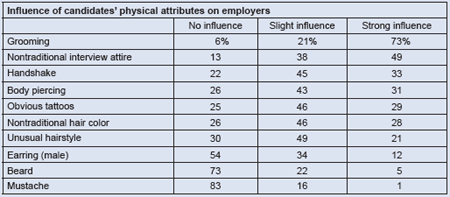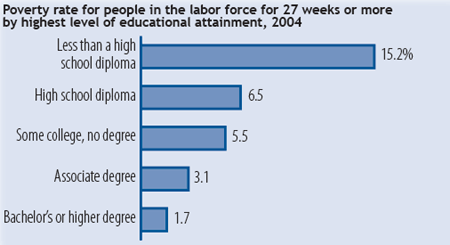|
 Download the PDF
(302K)
Download the PDF
(302K)
Grab bag
from past issues
|
When fire strikes, fire fighters come to
the rescue. But long before a fire starts—and often
before buildings are even constructed—fire protection
engineers analyze ways to save people and places from a
blaze.
Fire protection engineers use science and
technology to answer questions about how fires burn and
how life and property can best be protected. They might
use their knowledge to help design buildings that will
remain structurally sound during a fire or to design fire
alarm, exit, or sprinkler systems.
The U.S. Bureau of Labor Statistics (BLS)
does not collect data specifically on fire protection
engineers. Instead, it categorizes these workers under the
broad title of health and safety engineers, an
occupational group that also includes product safety and
industrial health engineers. The Society of Fire
Protection Engineers estimates that there are about 6,000
fire protection engineers in the United States.
For career information about this occupation, write to
the Society of Fire Protection Engineers, 7315 Wisconsin
Avenue, Suite 620E, Bethesda, Maryland 20814; call (301)
718-2910; or visit online,
www.careersinfireprotectionengineering.com.
 Top Top
|
|
Most employers agree that job candidates should
be well groomed for an interview. However, the particulars of
appearance—such as an unusual hairstyle or obvious tattoos—might
not matter as much when it comes to making hiring decisions,
according to survey results from the National Association of
Colleges and Employers.

The association’s Job Outlook 2006 survey
asked employers the degree to which they would be influenced by
certain aspects of a candidate’s appearance. As the table
shows, survey respondents indicated that some eccentric
hairstyles and attire don’t have a strong influence on
employers’ decisions.
Jobseekers might want to weigh the risks before opting for self-expression, though. After all,
even a slightly negative impression is enough to keep a
candidate from getting a job, particularly if employers are
choosing among several qualified candidates.
Interviewers’ opinions aside, some
organizations have strict policies about the appearance of their
employees; a company’s rules might stipulate, for example,
that male employees cannot have a beard or mustache. On the
other hand, some employers might seek out unconventional
candidates and be more accepting of a less traditional
appearance.
For more information about the survey, write to the National
Association of Colleges and Employers, 62 Highland Avenue, Bethlehem, Pennsylvania 18017; call
toll-free, 1 (800) 544-5272, or (610) 868-1421; or visit its Web
site, www.naceweb.org.
 Top Top
|
|
|
|
|
|
|
|
Do you know someone who loves to skateboard and
plans to go to college? That person’s promotion of the sport,
regardless of skill level, might help him or her to land a
$1,000 or $5,000 scholarship.
In the realm of scholarship funding, passion for
a cause can bring rewards. There are advocacy-related
scholarships for everyone from vegetarians to beef enthusiasts.
And although some scholarships are based on interest, others are
reserved for students who have special qualities. If you’re
short or tall, for example, you might be eligible for money to
help pay for your higher education.
For an online list of, and links to, these and
other uncommon scholarships, go to finaid.org/scholarships/unusual.phtml.
Even if you apply for a scholarship, don’t forget to
complete a free Federal application for student aid. Apply
online at www.fafsa.ed.gov. For more information, write
to the U.S. Department of Education, 400 Maryland Avenue SW.,
Washington, D.C. 20202. Or call toll-free, 1 (800) 4-FED-AID
(433-3243), or
(202) 401-2000.
 Top Top
|
|
|
|
|
|
|
|
|
|
|
You might want to work in the State where you
now live. Maybe you’re hoping to relocate instead. As long as
you’re considering the U.S. job market, you’ll want to know
what’s going on in the State in which you’ll seek work.
Even though BLS provides employment projections
for the Nation as a whole, projections at the State level can
help jobseekers pinpoint what’s happening where they might
choose to work. Every State creates employment projections,
usually with the help of national estimates. Job growth varies from one region to another,
depending on local factors and trends. Some States provide
projections for smaller geographic areas, too.
State projections differ from national ones in
another way. Although BLS projections are released on a regular
biennial schedule, timetables for the States vary.
Details about State projections are available from the States’
labor market information offices. You can find mailing addresses
and telephone numbers for these offices in the blue pages of the
telephone book. Links to projections are also available online
at
www.projectionscentral.com.
 Top Top
|
|
|
|
|
|
|
|
Employers seek job candidates who have specific
qualities. That’s why resumes should be tailored to showcase a
jobseeker’s skills. But sometimes, tailoring the resume format
is required as well.
A resume for construction occupations, for
example, should reflect the applicant’s precision and
competency, quantifying accomplishments (such as saving a client
thousands of dollars) whenever possible. In applying for Federal
Government jobs, jobseekers need to emphasize how their
knowledge, skills, and abilities—KSA’s—match those sought
for the advertised position. And a curriculum vitae, or CV, is
frequently required by employers abroad. (For more on CVs, see
"Working abroad: Finding international internships and
entry-level jobs," by Jill N. Lacey, elsewhere in this
issue of the Quarterly.)
Check your local public library or your school’s
career counseling office for books and advice on how to write
the best resume for your career type. If possible, talk to
people who are already working in your desired occupation or
place of employment to find out how they organized their
resumes.
Finally, don’t forget about past issues of the Quarterly;
relevant articles include Olivia Crosby’s "Resumes,
applications, and cover letters" (online at www.bls.gov/opub/ooq/1999/summer/art01.pdf) and "How
to get a job in the Federal Government" (online at
www.bls.gov/opub/ooq/2004/summer/art01.pdf)
and Elka Jones’ "Getting back to work: Returning to the
labor force after an absence" (online at
www.bls.gov/opub/ooq/2004/winter/art03.pdf).
 Top Top
|
|
|
|
|
|
|
|
In this issue of the Quarterly, both
"Job outlook by education" articles and the
OOChart use data to illustrate that completing more
education leads to higher earnings. Other data build on that
theme by showing that people with higher levels of education
are less likely to be among the working poor.

The chart shows that the risk of being poor
generally falls as individuals attain more education. Of
those in the labor force for most of 2004, for example, more
than 15 percent of people who did not have a high school diploma were among the working poor, compared with less than
2 percent of people who had a bachelor’s or higher degree.
Educational attainment is linked to earnings potential
because high-paying occupations—such as management,
professional, and related occupations—are more likely to
be available to those who have higher levels of education.
These data were collected in the 2005 Annual Social and
Economic Supplement to the Current Population Survey. For more information, see "A Profile of the
Working Poor, 2004," Report 994. For a copy of the report, write to BLS, Division of Labor Force Statistics,
2 Massachusetts Avenue NE., Room 4675, Washington, D.C.
20212; call (202) 691-6378; or download it from www.bls.gov/cps/cpswp2004.pdf.
 Top Top
|
|
|
|
|
|
|
|



